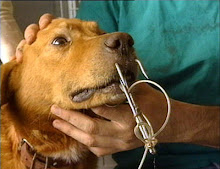Studies reveal the differences in species of bacteria found in cat and human plaque and pave the way for more effective treatment for one of the most commonly diagnosed health problems in cats
Gum disease is one of the most commonly diagnosed health problems in cats, yet relatively little was understood about the bacteria associated with it – until now. Two collaborative studies have been conducted by researchers from the WALTHAM Centre for Pet Nutrition together with expert veterinary dentists and the Harvard affiliated Forsyth Institute. The work, published in Veterinary Microbiology in February 2015 and PLOS ONE today, sheds new light on feline gum disease, identifying the most common bacterial species associated with health and disease in cats for the first time.
Using the latest DNA sequencing
technologies, researchers identified 267 bacterial species present in feline
dental plaque and built a database detailing the differences between bacterial
populations in healthy cats and those in cats with gum disease.
“This knowledge is a first step in
understanding the potential for improving oral health of cats through dietary
interventions that target disease-associated bacteria.” said Dr. Ian Davis, Oral
Health Researcher at WALTHAM, part of Mars Petcare.
The
studies also revealed that the bacterial species in feline plaque were more
similar to those observed in canine plaque than to those found in humans. This suggests that interventions targeted at
bacteria which cause oral disease in humans are unlikely to be effective in
cats, and there is more potential to learn from interventions that work well in
dogs.
Dr. Davis added “It’s important for
pet owners to know that cats are just as susceptible to gum disease as dogs and
understand the importance of maintaining a good oral hygiene routine; ideally
including tooth brushing and dental treats or a specific dental diet”.
The latest
study, published today in PLOS ONE, can be downloaded by clicking on this link
http://dx.plos.org/10.1371/journal.pone.0136986.




No comments:
Post a Comment